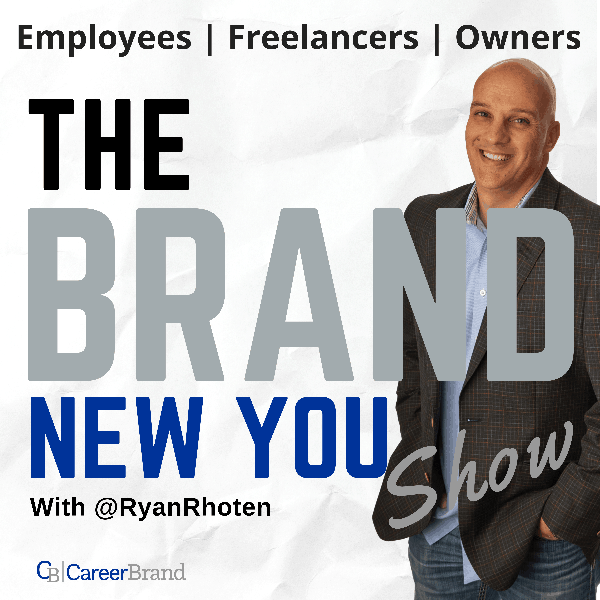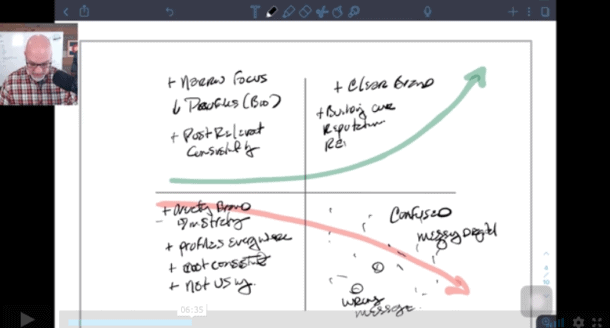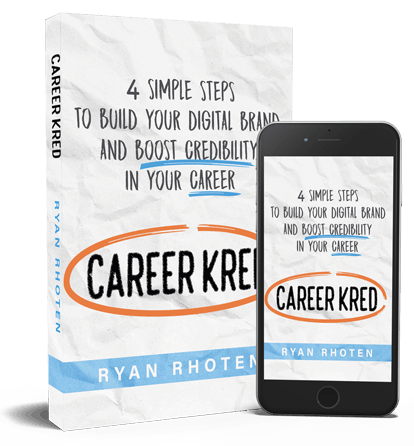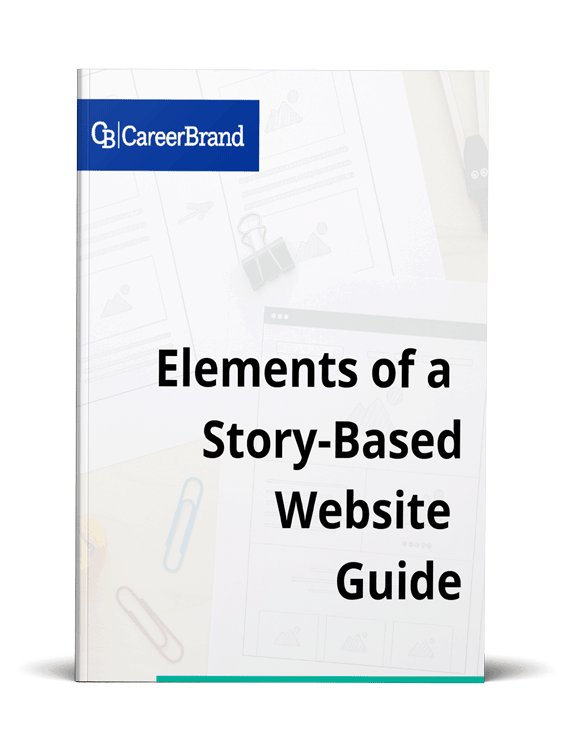Today’s guest is Marc Miller founder of CareerPivot.com. CareerPivot has been included in the Forbes list of top 100 Career websites, and Marc is the author of three career-related books including the one we’ll discuss today, Repurpose your Career – A practical guide for the second half of life.
Marc, it is my pleasure to Welcome you back to the brand new you show
[smart_track_player url=”http://traffic.libsyn.com/thebrandnewyoushow/Marc_Miller_FINAL.mp3″ title=”Know Thyself with Marc Miller” artist=”Ryan Rhoten” social_linkedin=”true” social_pinterest=”true” ]
Repurpose your Career – A practical guide for the second half of life.
Marc and I start our conversation out by discussing the importance of contentment in your career. Contentment, in case you’re wondering, is a state of happiness and satisfaction. Something many people lack in their current careers.
Marc and I spend time discussing the differences of contentment between the working generations. Specifically the baby boomers, Gen-Xers, and the millennials. In many cases, the millennials are choosing work, the way the previous two generations wish they had been able to do.
This is resulting in them being happier and more content in their working careers. Marc offered the following as a quick summary of the stereotypical generational working happiness.
- Baby Boomers = Happy when you retire
- Generation X = Happy when you’re successful in your career
- Millennials = Happy doing what is important to them
One of the things enabling millennials to do work that makes them happy is technology. Unlike previous generations that may have been a little “skittish” of new technologies, Millennials grew up with it and therefore embrace it more readily.
Ironically, the same technologies that enable this level of contentment are also the ones that are the driving force behind companies and in some cases industries disappearing. In the coming years, more and more “white collar” work will be done by bots.
With this mind, Marc challenges all of us to consider the possibilities that our jobs, your job, could one day be done by a software program.
KNOW THYSELF
As we continue to evolve our definitions of work contentment and begin to prepare for the day when we may need to repurpose our careers, Marc tells that one of the most important things for us to understand is ourselves.
This is also a key tenant in my book
CareerKred. Today, when you go to work you play a role. That role may or may not be reflective of who you truly are as a person but in order to maintain your position, you play the role.
Over time, Marc tells us it’s possible for us to believe that we are in fact the role we are playing at work. Your success in that role depends on how you behave, but it’s not reflective of who you are. Ever meet someone who strongly identified themselves with their job?
To combat this and get back to who we are so we can become content in our work, Marc helps his clients better understand themselves because associating your role with who you are can be very unhealthy and lead you to bad career decisions.
THE BIRKMAN PROFILE ASSESSMENT
Marc is a certified Birkman Profile Assessment coach. He likes the assessment because it not only tells you how you behave but it also tells you how you want to be treated. This is extremely important because, without the second part, it’s possible for you to take a role that may align with your behavior but is contrary to how you want to be treated.
This leads to the opposite of career contentment. It leads to career frustration and the feeling of being stuck.
Marc uses the Birkman to ensure his clients get into a career path that aligns with who they are helping his clients understand their career holistically through taking a look at past positions in order to ferret out when they were happy and when they weren’t.
Marc also uses the Birkman in combination with his own questions and will give the following assignment to his clients to help them determine their decision-making style. Can you answer the following question?
Identify three problems you solved in your personal life and three problems you solved at work. Got the problems in your mind? Now answer how you solved them.
The amazing thing about understanding your decision-making process or how you think is that once you know, you start to recognize these things in others. You will know they make decisions differently than you which will make it easier for you to communicate and work together.
PERSONAL OPERATING SYSTEM
Marc helps his clients find clarity by coaching them to establish their own personal operating system. Like an operating system at work, a personal operating system establishes a set of criteria in which you work the best.
Using the Birkman stress report you can obtain your top forty needs. From the forty, Marc has clients narrow the list down to ten. Once you have your ten needs, Marc has clients write out an open-ended question for each of the needs.
The questions should relate to ones you would ask as you are assessing a new role. As an example, if you discover you need flexibility in your role from your boss, an open-ended question you may want to ask to would be, “Tell me about your management style”?
With the questions written, Marc then asks his clients to identify what they are listening for with each answer. If you need flexibility from your boss in order to perform at your best and the potential manager tells you their management style is to have you give them weekly reports and status updates, you can very quickly see how this role, will not meet your needs.
Marc provides some great examples from his Birkman profile and how he applies them to his career choices. This is the power of self-awareness.
“AWFULIZING”
As humans, when things don’t the way we expect we tend to assume the worst. In fact, it’s quite possible we start to make stuff up in order to justify our feelings of frustration or overwhelm. Marc calls this MSU Disorder and in some of the worst cases, we digress to awfulizing.
Awfulizing is simply taking the stuff we have made up and making it completely the worst-case scenario. Awfulizing causes us to stop being rational and instead we become very emotional. At times these emotions can get the best of us.
Understanding when you are experiencing MSU disorder and awfulizing is a component of becoming more self-aware. The good news is once you understand this is what is happening you can break the cycle by using the old stop, drop, and roll technique.
Like the fire drill you learned as a child, once you realize you are starting to awfulize, you stop. You assess the situation by dropping the made-up feelings, then you roll into a new stance or position.
STRATEGIC NETWORKING
In his book, Marc discusses the difference between networking and strategic networking. Networking, as you may know, is a key part of the Engage step in the DICE process. Marc tells us that strategic networking is identifying specific people who can help you in a specific way.
Regular networking, on the other hand, is meeting new people without understanding specifically how they can help.
Using LinkedIn, you can very easily find people at companies you want to work for, or who are in roles you want to obtain. Marc likes to say, find people who look and smell like you. Meaning, once you’ve identified a company or even a specific skill type, use the profile pictures in LinkedIn to identify people who can best relate to you.
Once you identify those people, you reach out to them with very specific questions and objectives. You can do the same for researching potential companies.
ANSWERING THE DREADED QUESTION
One of the last chapters in Marc’s book is simply titled “How to Answer The Dreaded Question”. I immediately assumed the question was, tell me about yourself. However, that’s not the case. Marc asserts that the dreaded question in an interview is actually, “Why do you want to leave your current position”?
Marc tells us that this question is asked because the interviewer is trying to assess if there are any underlying issues with your departure that could raise red flags.
To avoid giving away anything, Marc suggests using the question to speak positively about your current company but to quickly pivot the question back into a question for the interviewer. In this way, you are deflecting the answer and avoiding having the interviewer dig into your past.
PODCAST – REPURPOSE YOUR CAREER
Marc launched the Repurpose Your Career podcast late last year (2016). He divides the podcast into four parts. The first part is an interview with an expert. In part two, he interviews someone who has made a career change.
The third part is Marc choosing what he wants to do, for example, several episodes have been edited version of him reading his book. In the final part, Marc answers reader questions.
The podcast releases every Monday right around mid-day. I’m a listener and I highly recommend checking it out – CareerPivot.com/podcast
THE BEST WAYS TO CONTACT MARC MILLER
Web: CareerPivot.com
Twitter: @CareerPivot
email: Marc@careerpivot.com
LinkedIn: linkedIn.com/in/MrMiller






